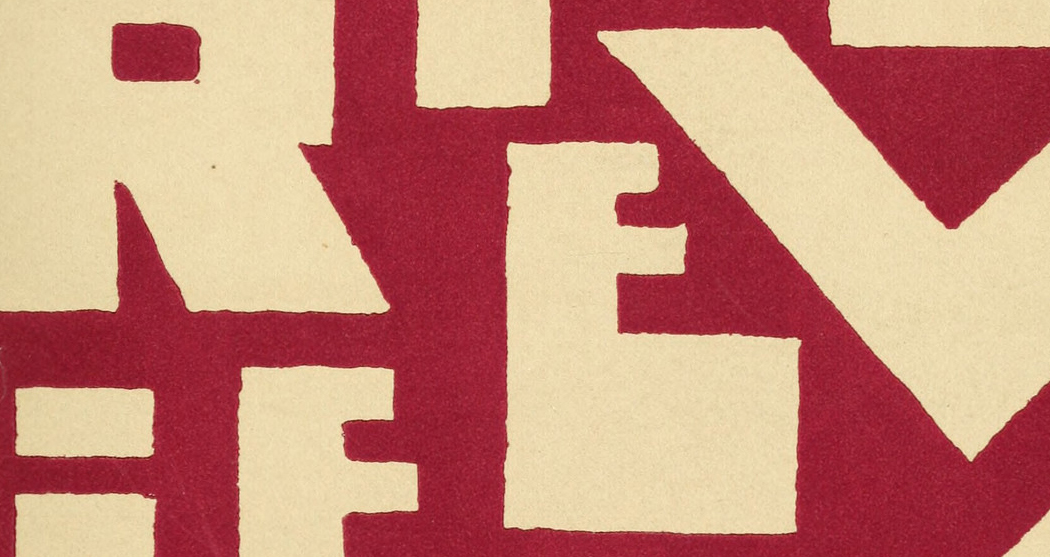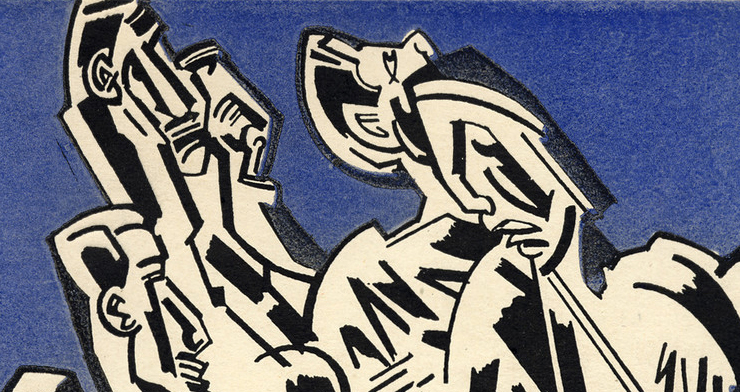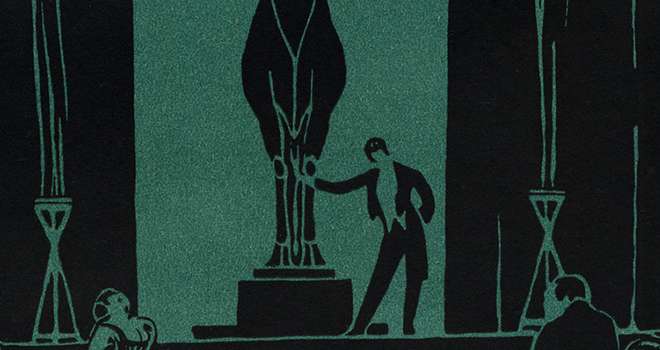I’m going to be thinking along several strands in relation to The Waste Land, which intersect aesthetic, social, and material aspects of the poem’s production and emergence. I’m somewhat summarizing these strands under three umbrellas of spatiality, modernism and the market, and collaboration which all tend to intersect into each other anyways.
In terms of spatiality, I found myself drawn to thinking about the waste land in its spatial dimensions. In particular, I was drawn to the lines “Clutch and sink into the wet bank. The wind / Crosses the brown land, unheard. The nymphs are departed” from “The Fire Sermon” (11). I felt this strongly resonated with the war poems we read last week in terms of depicting a dying landscape and the imagery of clutching, sinking, mud, and absence seemed like it resonated with the imagery we’ve read so far on WWI. I also found myself drawn to thinking about the Atlantic itself as another form of waste land with Eliot’s heavy emphasis on water and sailing throughout the poem. While the crossing of the Atlantic presented new opportunities, the vast distance itself could be seen as an interesting parallel to the land-based waste land that we’ve already touched upon in class so far.
Some questions I’ve started thinking about in regards to spatiality in TWL and the Transatlantic include: 1. What spaces facilitate movement across the Atlantic?
2. What spaces frequently appear in the transatlantic spatial imagination?
3. What continuities and deviations exist in spaces formed from the same structure but existing on different sides of the Atlantic (i.e., what does a port city look like in England versus the U.S.? How does Paris differentiate from New York? Etc.)
The essays on the emergence of TWL also touched another broad theme I think we could track in this course, which is thinking about the intersection of the growing global market and modernism which both find facilitation through transatlantic exchange. I thought it was interesting in Rainey’s “The Price of Modernism: Publishing The Waste Land” that they observed that “By 1922 literary modernism desperately required a financial-critical success that would seem comparable to the stunning achievement of modernist painting,” yet this desire for market success contrasted with Eliot’s own fears for what the market might due to his modernist magnum opus (99). In particular, Eliot’s decision to not pursue Vanity Fair as a publisher for The Waste Land is posited as a decision driven by the fact that VF “represented a degree of commercial success and popular acceptance that would have undermined the very status of the work that he was trying to establish” (110). This creates an interesting tension between modernism and its need to be marketable in order to maintain its heart beat, yet the fear that this very marketability will stifle what gives the heart its beat in the first place. Thinking about the market also makes sense in the context of the transatlantic, as the exchange of goods and ideas across the Atlantic has had an exponential impact on the emergence and expansion of a global market. The Waste Land’s publication on both sides of the Atlantic is one testament to this new transatlantic market.
Some questions on the market and modernism in the transatlantic:
1. What technologies facilitated the exchange of goods and information across the transatlantic, and in what ways did these technologies impact the growing global market?
2. What are the tensions between modernism and the market as illuminated by TWL’s publication history and motivations for certain publishing venues?
3. How did the markets of literature and art change in relation to the proliferation of modernism?
Finally, in those same essays that touched upon the emergence of TWL I was struck by the immense collaboration (transatlantic collaboration, but also transhistorical collaboration) that was essential to TWL’s creation (and publication as touched on earlier). According to Helen Gardner’s article "The Waste Land: Pairs 1922," Eliot’s poem was the product of collaboration through editorial processes with both Ezra Pound and Eliot’s wife Vivienne. Both Eliot and Pound lived on both sides of the Atlantic, providing them each with sensibilities curated by life both in the United States and their travels in Europe. This, mixed with Vivienne’s input (being English and not American like Pound and Eliot), means that TWL was the product of transatlantic collaboration in the actual development of the poem, let alone its eventual transatlantic emergence and dissemination which involved several publishers and editors from both sides of the Atlantic. Focusing on the location of transatlantic authors during the periods in which they were writing, and some of the biographical context as to what was encouraging that transatlantic travel, could be another interesting lens for our class.
Some questions I’m thinking about regarding transatlantic collaboration:
1. Can we trace national elements from modernist texts that are a result of transatlantic collaboration, or does the text obliterator those national markers in an effort to move towards the transnational?
2. Who were the major collaborators who seemed to have a stake in the directions modernism was moving in on both sides of the Atlantic?


